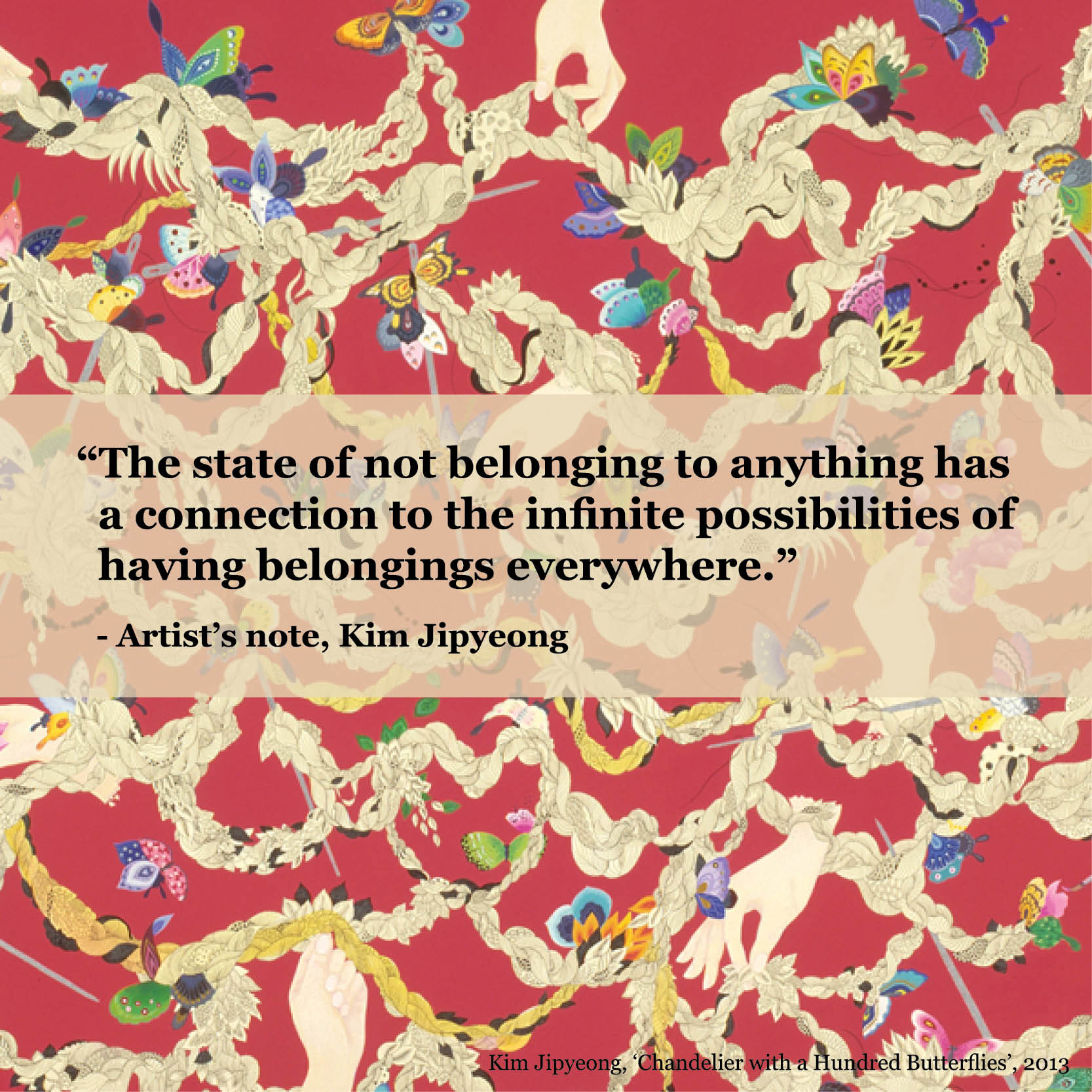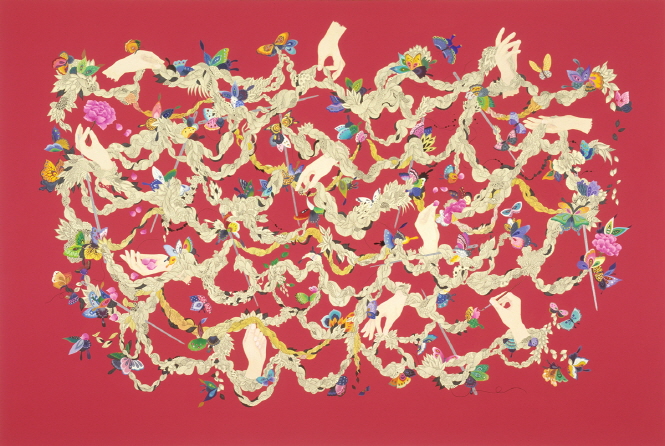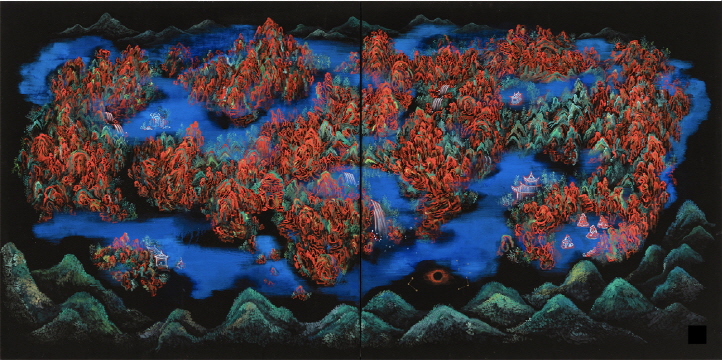Kim Jipyeong's solo
exhibition “PAINTINGS LOST” is based on the written records of paintings from
the Three Kingdoms period to the late Joseon Dynasty. For example, paintings
such as the Yeseonggang River in Inyeong (Goryeo) and the bamboo paintings of
Angyeon (Joseon) were lost and have not been transmitted since. Although
we cannot see these paintings now, the documents of the time allow for various
interpretations and imaginations.
 김지평 개인전(Kim Jipyeng Solo
Exhibition) ‘없는 그림 (Paintings Lost)’, 2023. Installation
view ©김지평(Kim Jipyeong), INDIPRESS
김지평 개인전(Kim Jipyeng Solo
Exhibition) ‘없는 그림 (Paintings Lost)’, 2023. Installation
view ©김지평(Kim Jipyeong), INDIPRESS
The artist created the work of the same name two years ago. The installation consists of folded folding screens and museum glass showcases. In this work, the ornately decorated folding screens are actually devoid of paintings, and the glass cases used to preserve artifacts are empty. Instead, the glass is inscribed on all four sides with selected quotes, anecdotes, and historical documents about the lost paintings, making the space in the glass box where the artwork is absent a place where the viewer can imagine the old paintings.
 김지평 개인전(Kim Jipyeng Solo
Exhibition) ‘없는 그림 (Paintings Lost)’, 2023. Installation
view ©김지평(Kim Jipyeong), INDIPRESS
김지평 개인전(Kim Jipyeng Solo
Exhibition) ‘없는 그림 (Paintings Lost)’, 2023. Installation
view ©김지평(Kim Jipyeong), INDIPRESS
In the exhibition on the
first floor, which revolves around the glass showcase, a new folding folding
screen (a mourning screen without words or pictures) made of barbed wire has
been installed instead of a folded folding screen. In addition, an arithmetic
notebook made of English text paintings removed from the folding screen and a
text diagram related to the theme of the exhibition are used to reflect on the
history of art and the current meaning of 'Oriental painting'
 김지평 개인전(Kim Jipyeng Solo
Exhibition) ‘없는 그림 (Paintings Lost)’, 2023. Installation
view ©김지평(Kim Jipyeong), INDIPRESS
김지평 개인전(Kim Jipyeng Solo
Exhibition) ‘없는 그림 (Paintings Lost)’, 2023. Installation
view ©김지평(Kim Jipyeong), INDIPRESS
In contrast to the impression
of the first floor exhibition, which shows the meaning of "nothing"
in "PAINTINGS LOST," the second floor displays paintings and folding
screens in a variety of colors. You can see a series of folding screens that
freely extend the custom of calling each part of a "long poem" by
comparing it to a woman's clothing, a painting that was
"accidentally" drawn based on a shoemaking poem by a shrine priest,
and a text that indicates meaninglessness.
---
"(...) 'Nothing' can
also be translated as lose, spoil, disappear, forget, erase. Associated with
the pressure of time or oblivion, it is neither possible nor meaningful to
return this 'absence' to its place of 'presence'. The absence of something creates
a sense of loss, so why not just participate in its alienation? Let the sounds,
pictures, and letters of absence sing and dance with each other, and let them
play freely with each other. and <ルルルルル>; pictures of
letters that indicate meaninglessness, such as <虚, 無, 空>; images that are 'like' arithmetic paintings drawn without a
brush; folding screens that look like singers on stage, such as Divas Divas
(...)."
(Kim Jipyeong’s Artist Note.
2023)



















